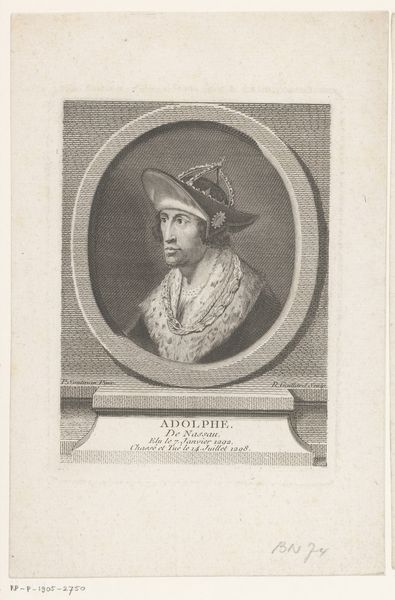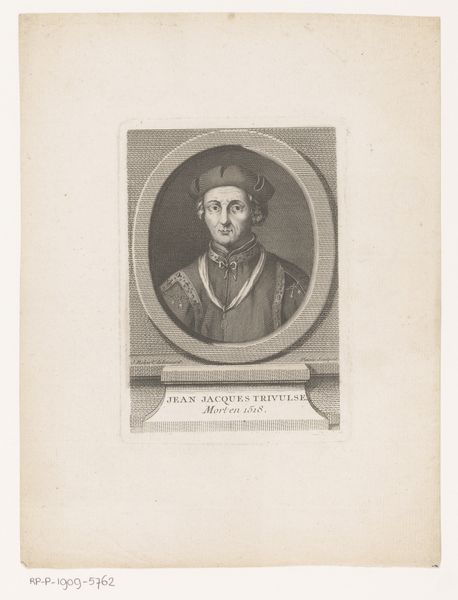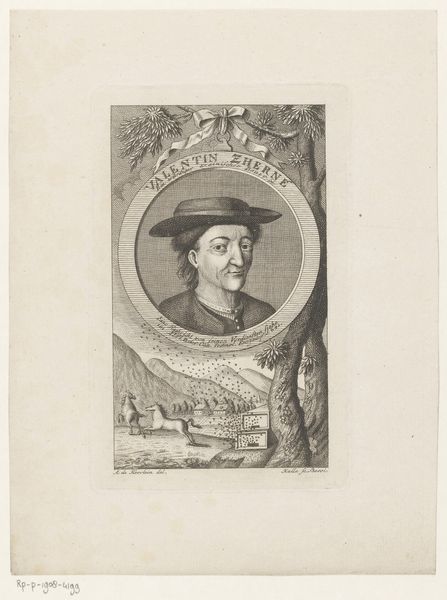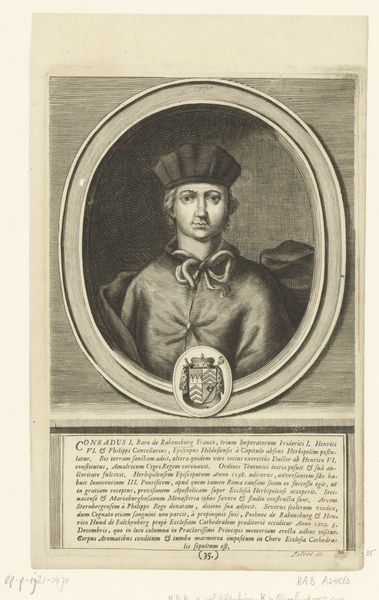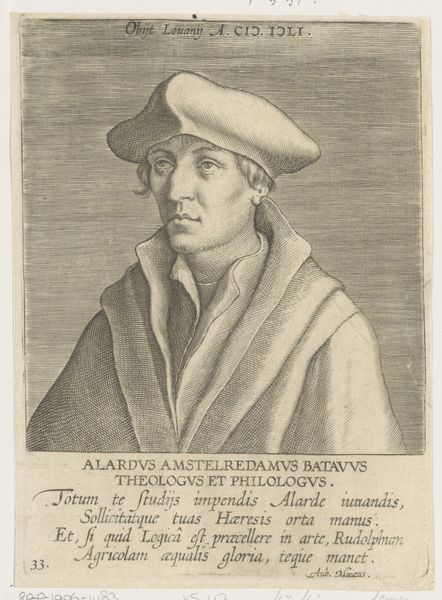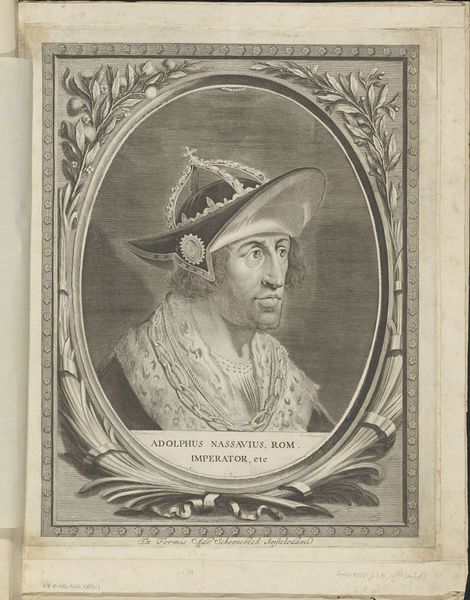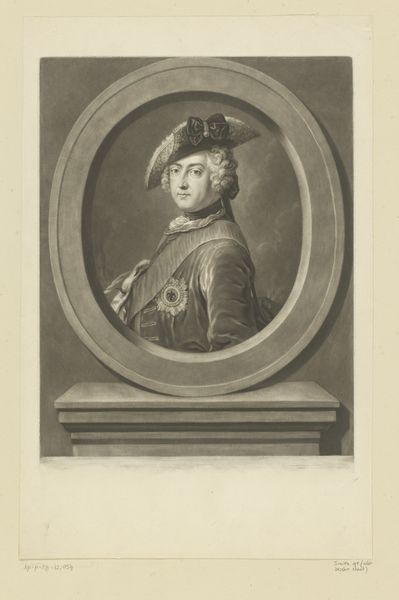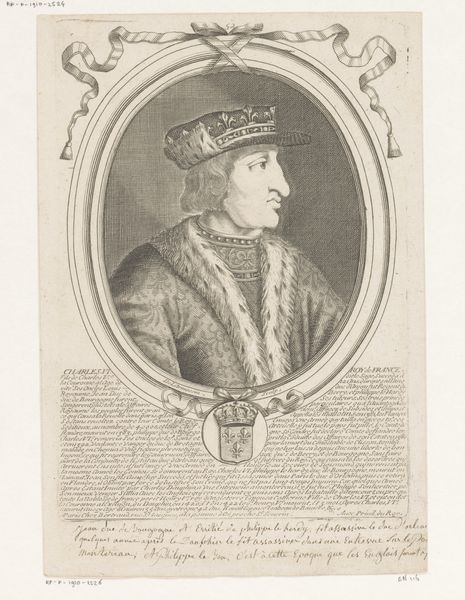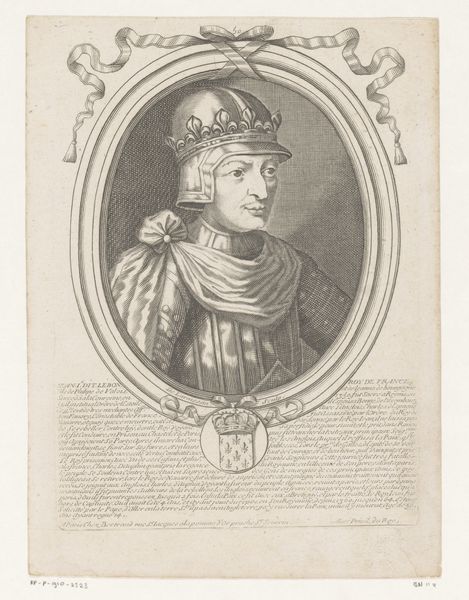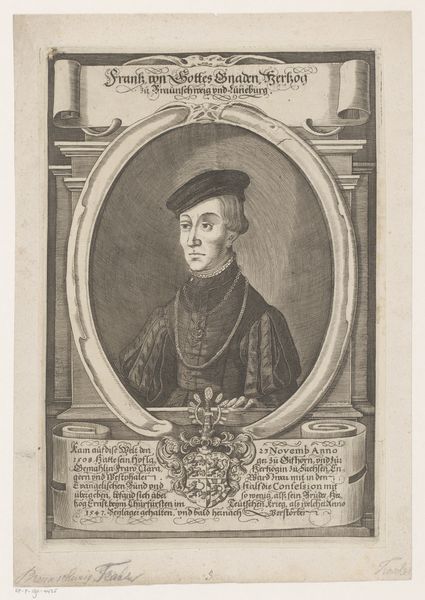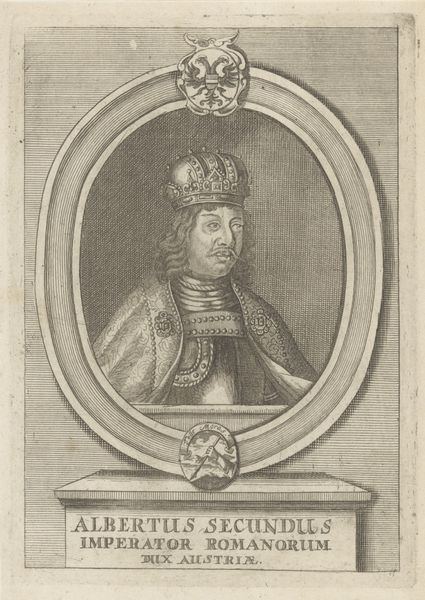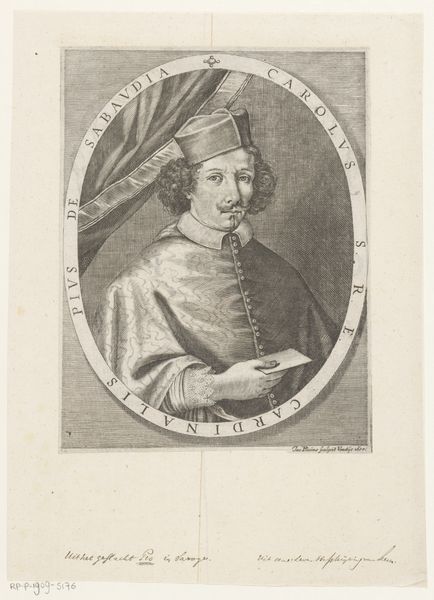
paper, engraving
#
portrait
#
baroque
#
paper
#
engraving
Dimensions: height 151 mm, width 110 mm
Copyright: Rijks Museum: Open Domain
Editor: This is a portrait of Tanneguy III du Chastel, an engraving on paper from sometime between 1755 and 1766 by Jean-Charles François. It's a very formal, almost stoic image. I'm struck by how consciously this positions the sitter within a very particular history. What do you see in this piece, particularly within its historical moment? Curator: The key element is exactly what you've touched upon: the construction of historical memory. Notice that this 18th-century print is of a man who died in 1477. This work speaks to the political and social functions of portraiture. Who was Tanneguy III du Chastel, and why might someone in the 1700s want to revive his image? Editor: I see, so it's less about pure representation and more about actively invoking the past. I can see how the chain of office alludes to status and authority, yet what’s more interesting is why. The description mentions he was a viscount. What would that signify to audiences? Curator: Precisely. Think about what it meant to be a noble in 18th-century France, leading up to the Revolution. The portrait reminds viewers of traditional hierarchies at a time when those hierarchies were under increasing scrutiny. The image becomes a political statement reinforcing existing power structures, despite the supposed neutrality of portraiture. Note also the conscious adoption of the Baroque style when other artistic styles were trending. Why do you think François consciously made that decision? Editor: That’s fascinating. It’s like the artist is consciously choosing to visually align the sitter with a tradition of power and grandeur from the past, pushing back against contemporary artistic and political trends. To highlight an illustrious lineage, perhaps? Curator: Exactly! It places Tanneguy, and by extension the nobility, within a long and visually impressive lineage, bolstering their claims to legitimacy in a society on the cusp of radical change. This wasn't merely art; it was carefully crafted political messaging through visual means. Editor: That really reframes the artwork for me. I initially saw it as just a historical portrait, but it's actively engaging with the politics of its own time through the selective presentation of the past. Thanks, I will definitely be reading portraiture more closely going forward!
Comments
No comments
Be the first to comment and join the conversation on the ultimate creative platform.
